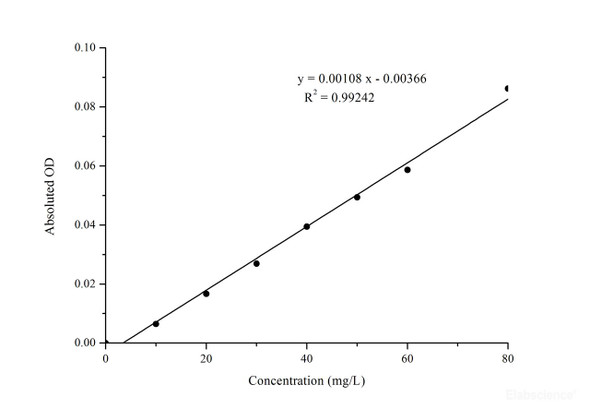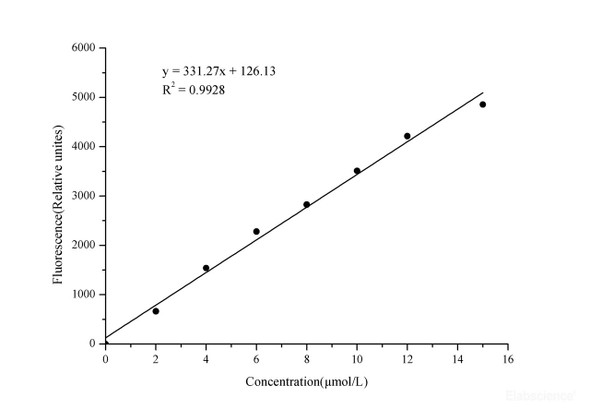Uric Acid Assay Kit - Information
Assay Genie's uric acid assay kit is designed to measure uric acid directly in serum without any pretreatment. The improved method utilizes 2,4,6-tripyridyl-s-triazine that forms a blue colored complex specifically with iron in the presence of uric acid. The intensity of the color, measured at 590nm, is directly proportional to the uric acid concentration in the serum. The optimized formulation substantially reduces interference by substances in the raw samples.
Applications
For quantitative determination of uric acid and evaluation of drug effects on uric acid metabolism.
Uric Acid Assay Kit - Key Features
- Sensitive and accurate. Use 5 samples. Linear detection range 0.22 mg/dL (13 ) to 30 mg/dL (1785 ) uric acid in 96-well plate assay.
- Simple and high-throughput. The procedure involves addition of a single working reagent and incubation for 30 min. Can be readily automated as a high-throughput assay in 96-well plates for thousands of samples per day.
- Improved reagent stability and versatility. The optimized formulation has greatly enhanced reagent and signal stability. Cuvet or 96-well plate assay.
- Low interference in biological samples. No pretreatments are needed. Assays can be directly performed on serum samples.
| Uric Acid Assay Kit- Data Sheet | |
| Kit Includes | Reagent A: 50 mL Reagent B: 6 mL Reagent C: 6 mL Standard: 1 mL 10 mg/dL uric acid Blank Control: 1 mL |
| Kit Requires | Pipeting devices and accessories |
| Method of Detection | OD590nm |
| Detection Limit | 0.2 mg/dL (13 ) |
| Samples | Serum, plasma, urine and other biological samples |
| Species | All |
| Protocol Length | 30 min |
| Size | 250 tests |
| Storage | Store reagents at 4 °C, standard and blank control at -20 °C. |
| Shelf Life | 12 months |
More Details
Uric acid is the waste product produced from the degradation of purines. In healthy human, uric acid is filtered and removed from the blood by the kidneys and excreted into urine. Because a number of kidney diseases are known to affect uric acid levels, uric acid determination is thus important and useful in diagnosing and evaluating kidney diseases. For example, when uric acid is present in the blood at abnormally high levels, it tends to crystallize in body joints, resulting in gout, a very painful inflammatory condition. Increased levels of uric acid are also known to be associated with uremia, leukemia and pneumonia. Simple, direct and automation-ready procedures for measuring uric acid concentration in blood are becoming popular in Research and Drug Discovery.








